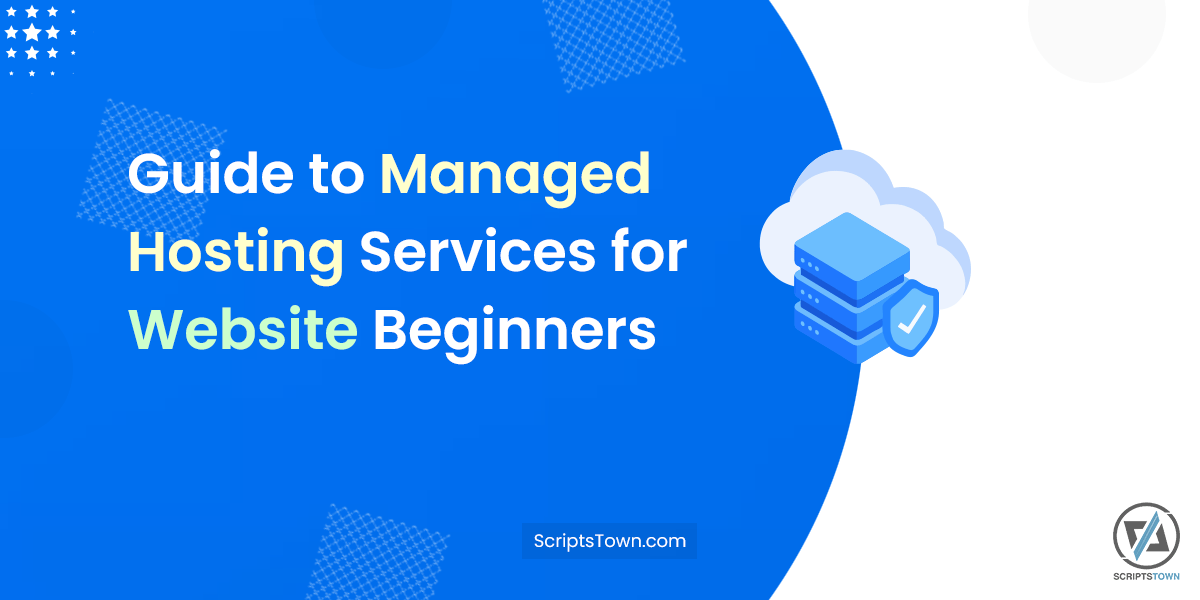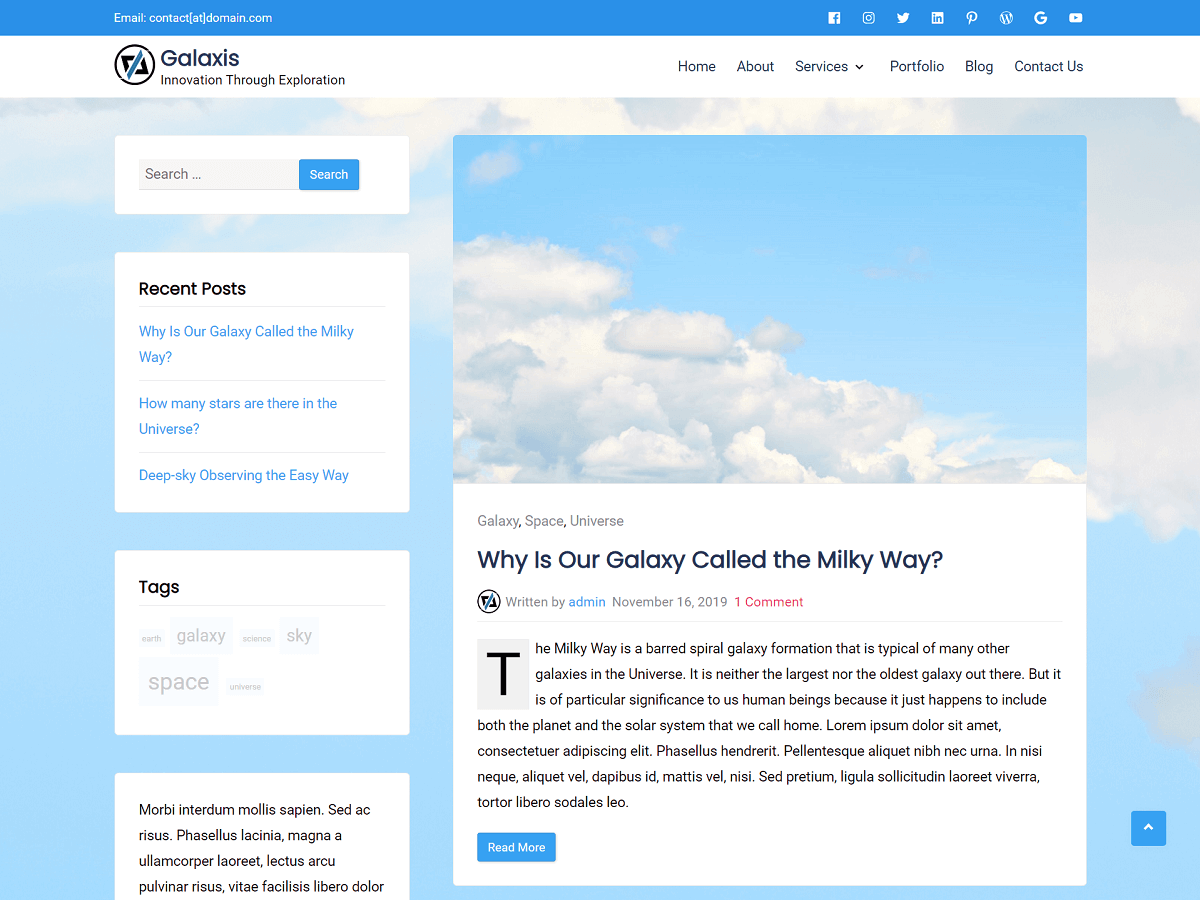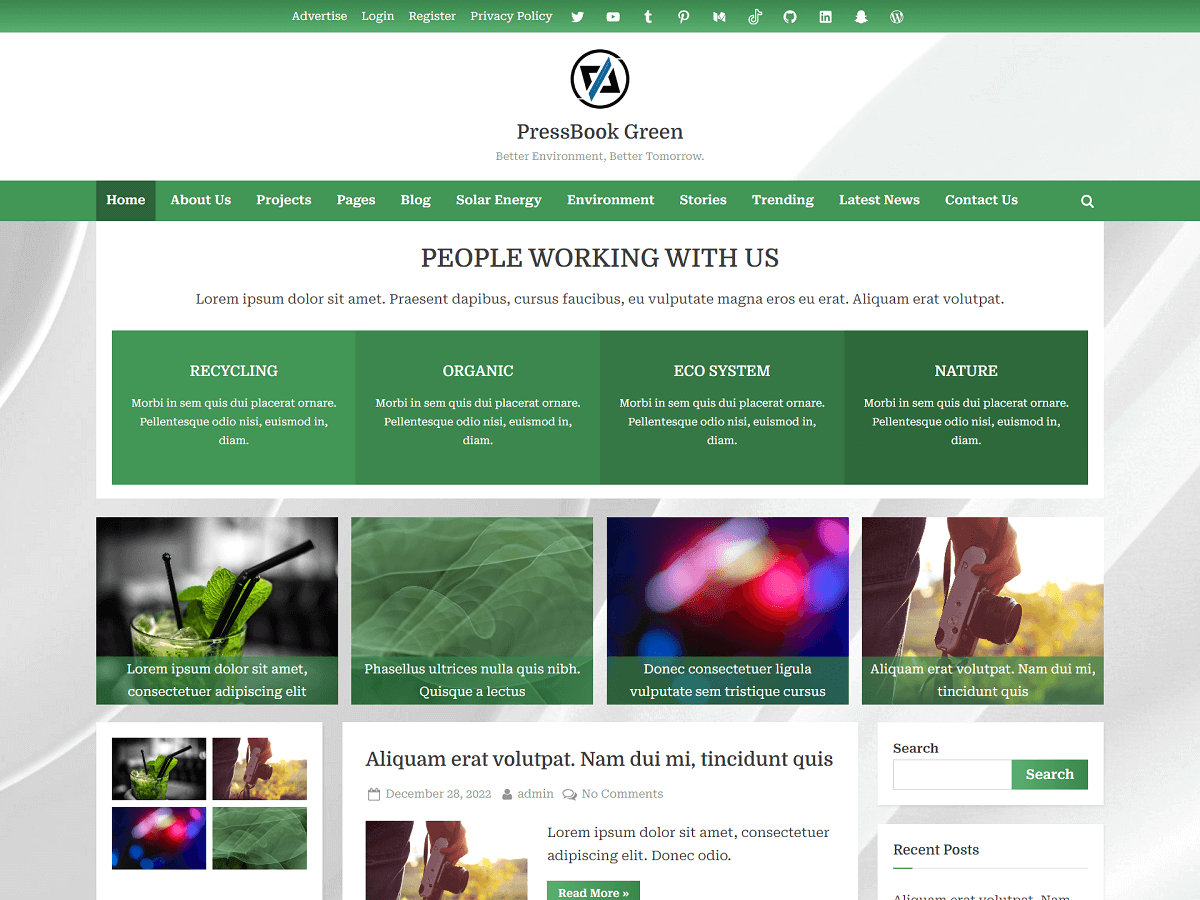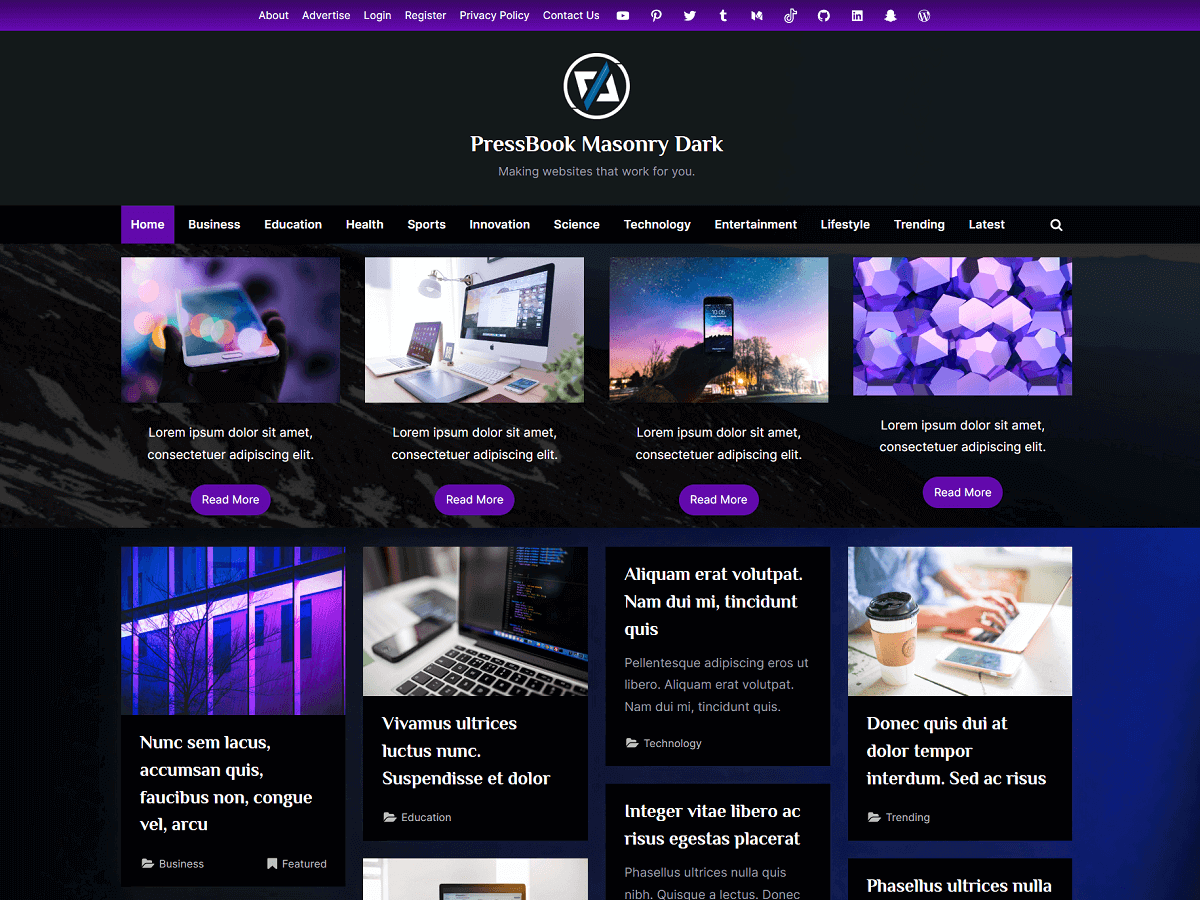In this guide, you’ll learn exactly what managed hosting is, how it works, and why it’s a smart choice for website beginners. We’ll explain the key features, benefits, tools, and providers so you can choose the right hosting without getting overwhelmed by technical details.
What Is Managed Hosting and Why It Matters
Managed hosting means your web host takes care of the technical stuff so you can focus on your website. That includes server management, updates, security, backups, and more.
For beginners, managed hosting can make a big difference. Instead of dealing with server setup or applying security updates on your own, you get a user-friendly interface and expert support that handles the technical side for you. For example, you won’t need to worry about upgrading your web server or manually setting up a firewall.
How Managed Hosting Works Behind the Scenes
Managed hosting comes with a ready-to-use server environment that’s specifically configured for your chosen CMS (Content Management System) or website builder.
Core components such as PHP versions, MySQL or MariaDB databases, firewalls, caching systems, and server-level configurations are already installed and optimized to ensure your website runs efficiently from the start.
These hosting environments are typically built on server stacks like LEMP (Linux, Nginx, MySQL, PHP), LAMP (Linux, Apache, MySQL, PHP), or LOMP (Linux, OpenLiteSpeed, MySQL, PHP). Each stack is fine-tuned to provide the best possible performance, stability, and compatibility with platforms such as WordPress, Magento, and Drupal.
The Core Benefits of Managed Hosting
Most managed hosts monitor uptime, update server software, and optimize performance automatically. You usually get tools for backups, staging environments, and analytics, all accessible from a clean dashboard.
Managed hosting typically includes the following core benefits:
CMS-Optimized Server Configuration
Your hosting provider sets up servers with the optimal configuration for your CMS.
For example, WordPress sites may require specific PHP versions, MySQL settings, caching configurations, and server-level rules tailored for popular plugins or themes. Joomla sites, on the other hand, benefit from optimized database settings aligned with its content structure and caching systems suited to its component-based architecture.
One-Click Installs
With pre-configured one-click installers, it becomes very easy to install and set up popular applications or CMS such as WordPress, Magento, Drupal, etc.
For example, SiteGround offers a simple installer for WordPress, WooCommerce, Joomla, and Drupal with optimized settings already configured. The installation process includes SSL certificates, database setup, and initial security configurations.
Hassle-free Maintenance
Your hosting provider handles all server maintenance tasks automatically. This includes operating system updates, security patches, and software upgrades.
For example, Kinsta automatically updates WordPress core and notifies you about plugin compatibility issues, while managed Joomla hosting ensures your Joomla installation stays current with the latest security patches.
Automated Monitoring
Advanced monitoring systems track your website’s performance, uptime, and resource usage 24/7. They automatically alert the team if any issues are detected.
Many providers also include real-time health dashboards and automated response mechanisms to resolve minor issues before they affect your visitors.
Security Layers
Multiple security measures work together including Web Application Firewalls (WAF), malware scanning, intrusion detection, and DDoS protection.
Some providers also offer automatic patching of vulnerabilities and isolate accounts to prevent cross-site contamination on shared environments.
Performance Optimization
Server-level caching, content delivery networks (CDNs), image optimization, and database tuning work together to make your site fast.
These enhancements are typically configured to work out of the box, reducing the need for third-party performance plugins or manual tweaking.
For example, SiteGround’s SG Optimizer automatically compresses images and minifies code. Cloudways also offers performance tools, including built-in CDN integration and support for caching layers like Varnish and Redis.
Backup Systems
Automated backup systems create regular snapshots of your entire website, including files, databases, and configurations. These backups are tested for integrity and stored in multiple locations for redundancy.
Most managed hosts allow you to restore from backups with a single click, and some even let you schedule backup frequency (daily, weekly, etc.) based on your site’s activity level.
Key Features to Look for in a Managed Hosting
Before picking a managed host, it’s worth knowing which features actually make a difference for your site’s performance, security, and ease of use.
Dashboard & UI
The dashboard is your main interface for managing your website, so it should be intuitive and comprehensive. Look for dashboards that provide:
- Clear Overview: Easy-to-understand metrics and status indicators.
- Quick Actions: One-click access to common tasks.
- Performance Metrics: Real-time data on site performance.
- Resource Usage: Clear indication of resource consumption.
Example: Kinsta’s MyKinsta dashboard provides detailed performance analytics and advanced management tools while remaining user-friendly.
Control Panels
- cPanel/Plesk: Control panels with comprehensive features.
- Custom Panels: Provider-specific interfaces optimized for their services.
- Simplified Interfaces: Panels focusing on essential features.
Example: SiteGround offers a custom control panel that retains the familiar functionality of cPanel but delivers a more streamlined and user-friendly experience.
Backup & Restore
Reliable backup systems are important for protecting your website:
- Automated Backups: Daily, weekly, or custom scheduling.
- Manual Backups/Snapshots: On-demand, manual snapshot capabilities.
- Retention Policies: How long backups are stored.
- One-Click Restore: Easy restoration from any backup point.
- Backup Testing: Verification that backups are working properly.
Example: Cloudways offers flexible backup scheduling with customizable retention settings and provides easy restoration through their dashboard.
Staging Environments
Staging sites allow you to test changes without affecting your live website:
- One-Click Creation: Easy staging site setup.
- Sync Options: Ability to sync changes between staging and live.
- Multiple Environments: Support for multiple staging sites.
- Database Sync: Synchronization of database changes
PHP/MySQL Management
Easy management of server technologies:
- Version Switching: Ability to change PHP versions for different websites easily.
- Database Access: Tools such as phpMyAdmin, Adminer, etc. for database management.
- Performance Monitoring: Tracking of database performance.
- Optimization Tools: Automatic database optimization.
Performance Stack
Knowing your hosting provider’s technology stack can help you make informed decisions about speed, compatibility, and performance.
Here are the most common stacks used with popular CMS:
- LAMP (Linux, Apache, MySQL/MariaDB, PHP)
- A classic and widely supported stack.
- Apache is a flexible, well-documented web server.
- Used by many hosts for WordPress, Joomla, and Drupal.
- LEMP (Linux, Nginx, MySQL/MariaDB, PHP)
- Swaps Apache for Nginx, known for its speed and efficient resource usage.
- Great for handling high-traffic sites with lower memory usage.
- Common for WordPress, Magento, and performance-focused setups.
- LOMP (Linux, OpenLiteSpeed/LiteSpeed, MySQL/MariaDB, PHP)
- Uses LiteSpeed or OpenLiteSpeed as the web server.
- Excellent built-in caching.
- Ideal for WordPress, especially with the LiteSpeed Cache plugin.
Email Hosting
Managed hosting may include email hosting with domain-based emails or it may require you to use a third-party service.
- Integrated Email: Domain-based email management. Manage email accounts and mailboxes from your control panel.
- Third-Party Integration: Recommendations for external email services.
- Webmail Access: Browser-based email access.
- SMTP/IMAP Support: Email client configuration.
Examples: SiteGround includes comprehensive email hosting with webmail access and email management tools. Kinsta focuses on web hosting performance and recommends third-party email services like Google Workspace or Zoho Mail for better email functionality.
Developer Tools
Managed hosting providers may offer advanced features for developers:
- SSH Access: Command-line server access with certain limitations.
- Git Integration: Version control system integration.
- WP-CLI: WordPress command-line interface.
- Access Logs & Error Logs: Ability to view detailed access and server error logs, including PHP errors, MySQL issues, and web server logs. Useful for debugging and performance monitoring.
- Cron Job Management: Scheduled task management.
Example: Cloudways provides comprehensive developer tools including SSH access, Git integration, and support for popular development frameworks.
Migration Help
Professional assistance for moving existing websites:
- Free Migration Services: Professional migration assistance.
- Automated Migration Tools: Self-service migration options.
- Testing and Validation: Verification that migration was successful.
- DNS Management: Assistance with domain changes.
Uptime & Monitoring
Look for hosts with 99.9% uptime guarantees and status pages.
- Uptime Guarantees: Service level agreements for availability.
- Monitoring Frequency: How often uptime is checked.
- Status Pages: Transparent reporting of service status.
- Alerting Systems: Notifications of issues or downtime.
Global Data Centers
Consider hosts with multiple server locations (globally) for faster regional loading.
- Geographic Distribution: Server locations worldwide.
- Load Balancing: Automatic traffic distribution.
- CDN Integration: Content delivery network inclusion.
- Latency Optimization: Reduced loading times globally.
Choosing a CMS: Why It Affects Your Hosting Options
Your choice of content management system significantly impacts which hosting provider will work best for your needs.
Each CMS has specific requirements and benefits from different optimizations.
Managed WordPress Hosting
WordPress-specific hosting providers like Kinsta, SiteGround, and WordPress.com offer environments specifically tuned for WordPress performance. These providers understand WordPress’s architecture and optimize accordingly.
Key Features:
- WordPress-specific caching systems.
- Automatic WordPress core updates.
- WordPress security hardening.
- Staging environments for testing.
- WordPress-specific backup solutions.
Managed Drupal Hosting
Drupal’s enterprise focus requires hosting providers who understand complex site architectures, advanced caching, and development workflows. Pantheon and Acquia specialize in Drupal hosting.
Key Features:
- Git-based deployment workflows.
- Advanced caching for complex sites.
- Multisite management capabilities.
- Enterprise-grade security.
- Developer-focused tools.
Pantheon includes Git-based workflows and staging environments specifically designed for Drupal development teams. Acquia provides enterprise-grade Drupal hosting with advanced security and compliance features.
Managed Magento Hosting
Magento’s eCommerce requirements demand specialized hosting with high-performance databases, security for payment processing, and scalability for traffic spikes.
Nexcess specializes in Magento hosting with enterprise-grade features. You get Magento-optimized hosting with built-in performance tools, security measures for eCommerce, and specialized support for Magento-specific issues.
Key Features:
- Elasticsearch integration for search.
- PCI compliance for payment security.
- Inventory management optimization.
- Auto-scaling for traffic spikes.
Managed Joomla Hosting
Joomla has specific requirements that differ from WordPress, including different database optimization needs and security considerations. Managed Joomla hosting providers understand these requirements and optimize accordingly.
Key Features:
- Joomla-optimized database configurations.
- Joomla-specific security measures.
- Template and extension management.
- Joomla-compatible caching systems.
Joomla-focused hosting providers ensure that caching systems work properly with Joomla’s component architecture and that security measures address common Joomla vulnerabilities. They also provide support for Joomla’s user management and multilingual capabilities.
Understanding the Cost of Managed Hosting: Is It Worth the Price?
Managed hosting is usually more expensive than unmanaged or VPS hosting, but the value comes from the comprehensive services and expertise included. You’re paying for peace of mind, security and backups, preconfigured tools, and professional support.
Many hosting providers offer attractive introductory pricing that increases significantly upon renewal. Be mindful of renewal rates as they’re often higher after the first billing cycle.
Some providers charge based on how many unique visitors you get each month instead of how much bandwidth you use. If you can, go with a host that gives you plenty of bandwidth instead. For most regular sites, 1 TB per month is more than enough.
Another thing to think about is how easily your hosting plan can grow with your website. Good managed hosts make it simple to scale up when your traffic increases. There is no need to migrate servers or hire a developer. But it’s smart to check how they handle traffic spikes: Do they charge extra? Slow your site down? Auto-scale for free? These little details can make a big difference as your website grows.
Finally, look at what’s included in the plan. Some managed hosts bundle in extras like premium CDN, malware scanning, built-in caching tools, and even 24/7 uptime monitoring. These features might cost extra elsewhere or require third-party plugins and setup. When bundled together and well-integrated, they can save you time, money, and a lot of hassle.
What Managed Hosting Doesn’t Cover: Tasks You’ll Still Need to Handle
Managed hosting provides extensive infrastructure and platform management but there are important limitations to understand.
Managed hosting won’t:
- Build your website for you.
- Promote your website through marketing and SEO.
- Design your theme or write your content.
- Solve issues in third-party plugins or themes.
- Give you full root server access (usually).
- Eliminate all performance bottlenecks without optimization on your end.
- Always include email hosting (some do not).
- Performance Limitations: Managed hosting optimizes server performance but you’re still responsible for:
- Image Optimization: Properly sizing and compressing images.
- Plugin Selection: Choosing well-coded, efficient plugins.
- Content Optimization: Creating content that performs wells and loads quickly.
- Database Maintenance: Keeping your database clean and optimized.
For example, if your WordPress site loads slowly because of oversized images or poorly coded plugins, that’s not something your hosting provider can fix at the server level.
Your Responsibilities:
You still need to understand your site’s goals and manage your content.
- Content Management: Creating and updating your website content.
- Theme Selection: Choosing and customizing your site’s appearance.
- Plugin Management: Installing and configuring extensions.
- User Management: Managing user accounts and permissions.
- SEO Optimization: Optimizing content for search engines.
- Website Strategy: Planning your site’s structure and functionality.
Common Pitfalls & Mistakes to Avoid When Choosing a Managed Hosting Provider
- Overpaying: Paying $100/month for a personal blog isn’t worth it. Start with appropriate plans and upgrade as needed. A personal blog doesn’t need enterprise-grade features.
- Wrong CMS Match: Using managed WordPress hosting for a Magento site won’t work. Make sure your hosting provider supports and optimizes for your specific CMS.
- Ignoring Scalability: Some managed hosts aren’t great for growth or scalability. Pick a provider that offers easy plan upgrades or server scaling as your traffic increases.
- Not Reading Support Terms: Know what support covers. Some providers won’t help with custom code or third-party plugin issues.
- Ignoring Email Hosting: Not all managed hosts include email services. Kinsta requires third-party email services, while SiteGround includes email in all plans.
- Not Considering Renewal Pricing: Introductory prices can be misleading. Check the renewal rates so you don’t get surprised by a much higher bill after the first term.
- Assuming All Features Are Included: Some plans may lack features like staging or automatic backups. Review the plan details carefully before choosing.
- Not Testing Support Quality: “24/7 support” doesn’t guarantee good service. Test response times and expertise before committing to a long-term plan.
Conclusion: How to Decide If Managed Hosting Is Right for You
If you’re just getting started and want a website that simply works, managed hosting is a great choice. You get support, speed, and security without needing to be a tech expert.
Managed hosting is ideal if you prefer to focus on creating content or growing your business rather than managing servers. The added peace of mind and professional assistance can easily justify the additional cost. For bloggers, small businesses, and agencies, managed hosting could be the best long-term value.
But, if you’re building something highly customized, have in-house devs, or need full control over your environment, unmanaged or VPS hosting might be a better fit. These options offer more flexibility, but they also require more technical know-how.








